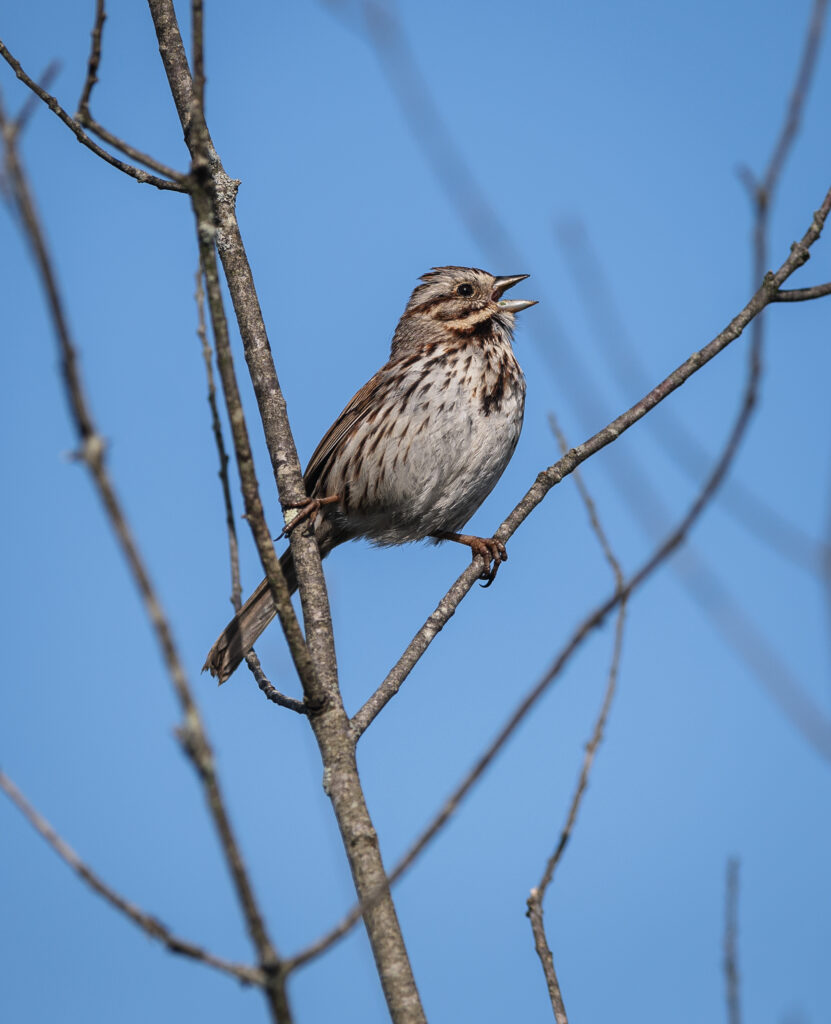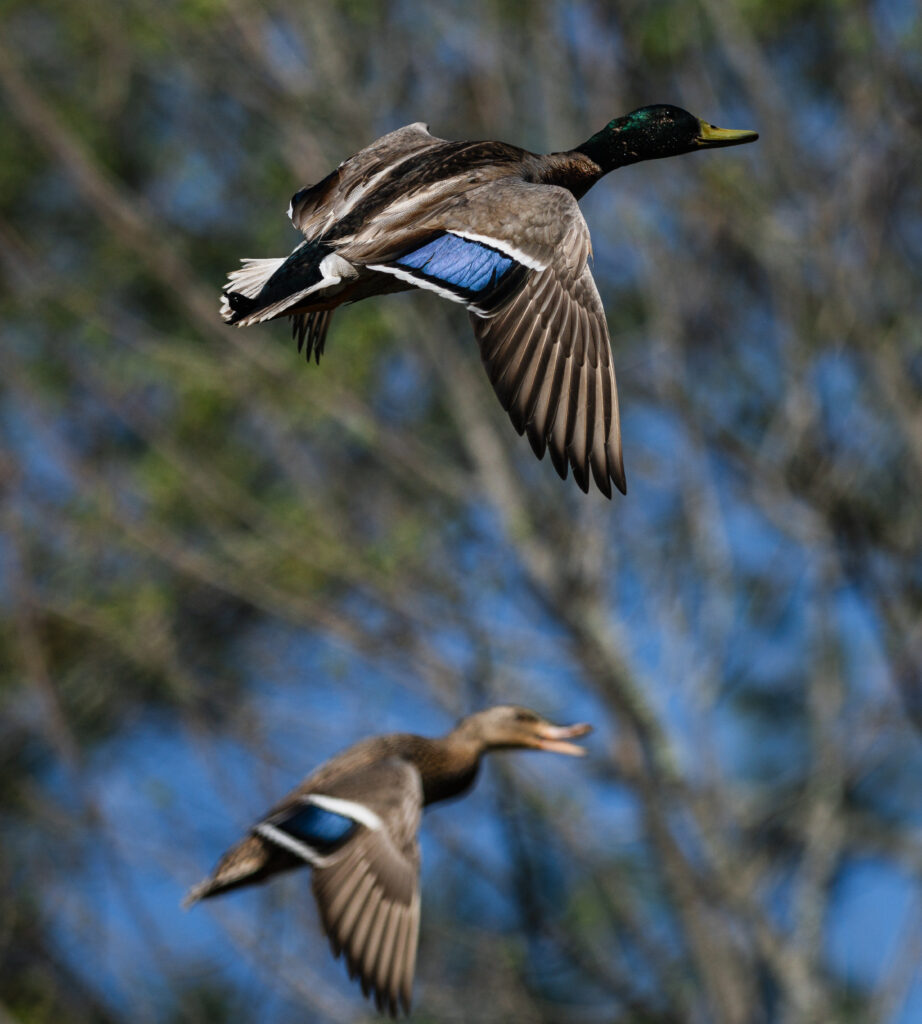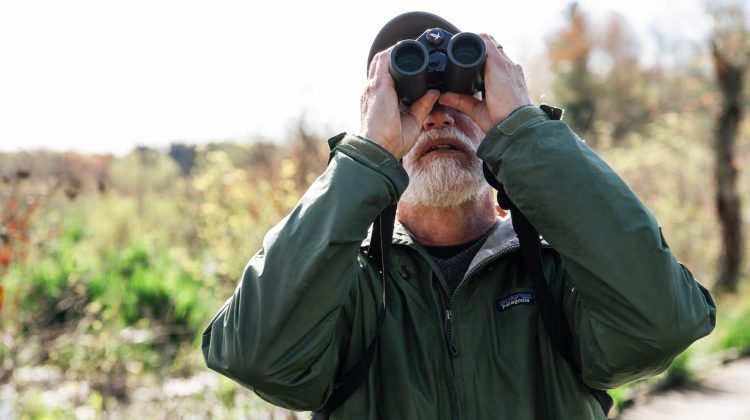Nonprofit land protection and wildlife conservation advocacy organization Mass Audubon defines Reedy Meadow, also known as the Lynnfield Marsh, as an important bird area, or IBA.
Due to the influx of birds and beautiful scenery, birding is incredibly popular in the meadow.
During the early days of May, prime birding season, 01940 headed out to the marsh with longtime birder and Essex County Ornithological Club President Jim McCoy.
“We are in a renaissance of birding, believe it or not,” McCoy said.
As the COVID-19 pandemic hit the world, McCoy said that people started looking for ways to bide their time.
“Birding is something to do when you have nothing to do,” he said. “There are far more birders now than there were not (too) long ago.”
McCoy has been birding since long before the pandemic, starting when his age was in the single digits.
“A blue jay landed outside our kitchen window when I was 5 years old, and I was immediately fascinated. And my parents got me a Junior Golden Guide, and decades later, I got to meet the author of the Junior Golden Guide, which was sweet,” McCoy said.
Now, rather than using a handheld guide while birding, McCoy has turned to useful birding apps like Merlin and eBird, which he recommends to anyone wanting to pursue the hobby.



McCoy’s recommendation for those who are interested in getting into the quaint hobby is to invest in some binoculars and look for your “spark bird.”
“There’s this notion of a spark bird. It’s the bird that gets you into birding. So, for me, it was that blue jay outside my kitchen window,” McCoy said.
Although McCoy said he spends around 350 out of the 365 days of the year birding, not everyone has to be as dedicated.
“If you’re looking at birds, you’re a birder,” McCoy said.
May is a particularly good time to go birding, as not everything is in full bloom, so the birds are easier to spot up on the branches. McCoy said that the birds who migrated down south for winter are also starting to come back this time of year.
“The males are all filled with testosterone this time of year, so they are singing, letting the females know ‘I’m here, choose me. Also, this is my turf, back off other dude,’” McCoy said. “They will be loud and many species of birds have multiple plumages.”
Going into the marsh on Partridge Lane Trail, which can be accessed across Main Street from Heritage Lane, McCoy said the easy-to-spot species are the wood duck, common yellowthroat, red-winged blackbird, and swamp sparrow.
The birds to keep a keen eye out for are the rusty blackbird and rails. The rusty blackbird is a declining species, and rails can be pretty tricky to spot, but love the marsh environment during the breeding season.
“They’re literally compressed, rails,” McCoy said about the birds’ appearance.
He said the saying “thin as a rail” was coined from the narrow species.
“Rails aren’t going to nest along your local pond. They need a bunch of grassy habitat, wet grassy, marsh habitat,” he said.
Reedy Meadow covers 1,200 acres of land, is a 90% emergent freshwater marsh, and is considered one of, if not the, largest contiguous emergent freshwater marshes in the state.
According to Mass Audubon, there are three separate criteria to be considered an IBA. The first is that a site has to be important for long-term research and monitoring projects that heavily contribute to ornithology or the study of birds. The second is that it has to be a site that contains “assemblages of species characteristic of a representative, rare, threatened, or unique habitat within the state or region.” The last criterion is that a site has to hold significant numbers of endangered, threatened, vulnerable, or declining species.
The morning McCoy was in the marsh, he said he saw 38 species. In his entire life, McCoy said he’s logged around 2,100 species from around the world.
McCoy can identify a bird not only by how it looks, but by the song it sings and the way it flies. He noticed a belted kingfisher way off in the distance.
“See, first I heard the little bit of the rattle, so I was looking for it,” he said.
He said noticing the sound and shape of a bird is similar to being able to recognize a family member from the way they walk or talk, without seeing their face.
“Over time, you just gain familiarity. Birds move differently, they fly differently, they’re different shapes,” McCoy said.
If anyone wants to go birding, the marsh is a great place for it.
“This is kind of a sleeper habitat in that it’s not that well known outside of Lynnfield… birders (though), are generally aware of it,” McCoy said. “Lynnfield Marsh kind of gets overlooked.
What are you waiting for? Grab some binoculars and get to birding!

